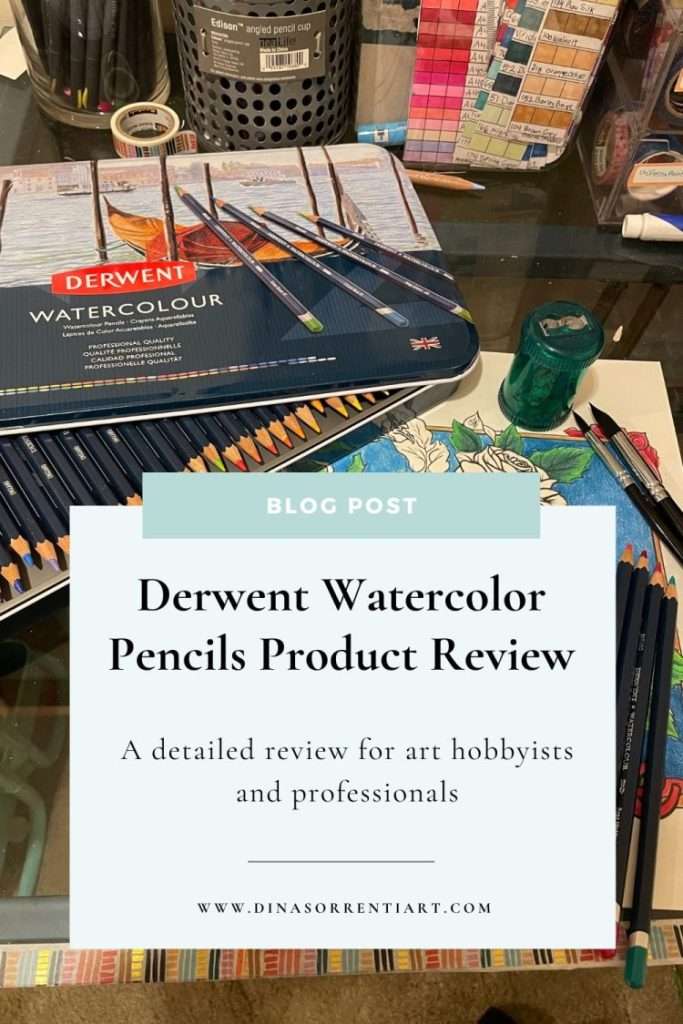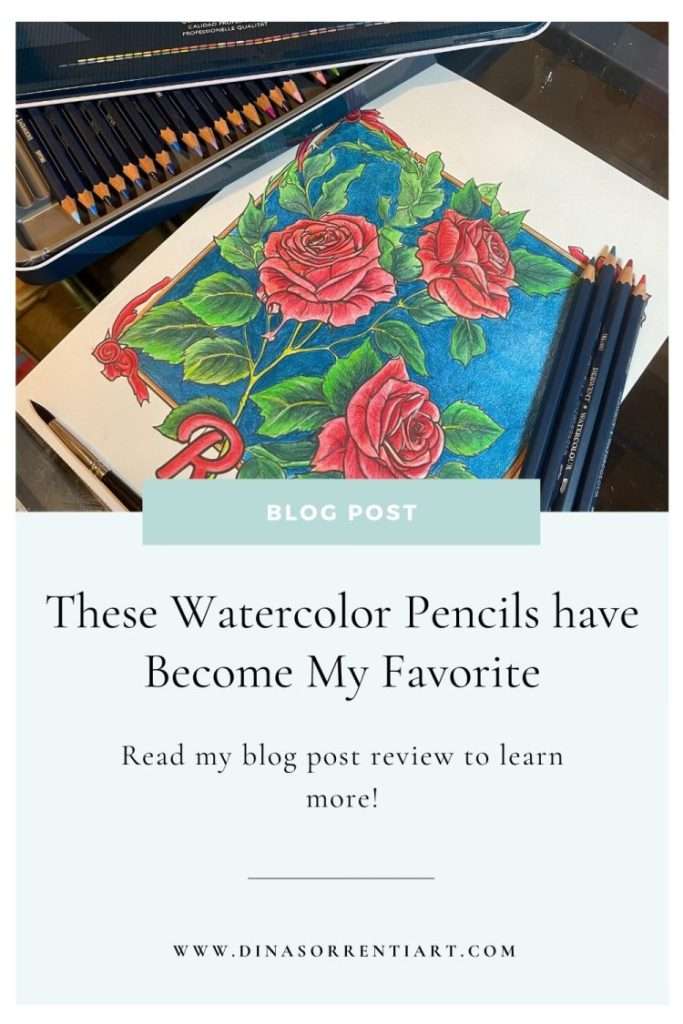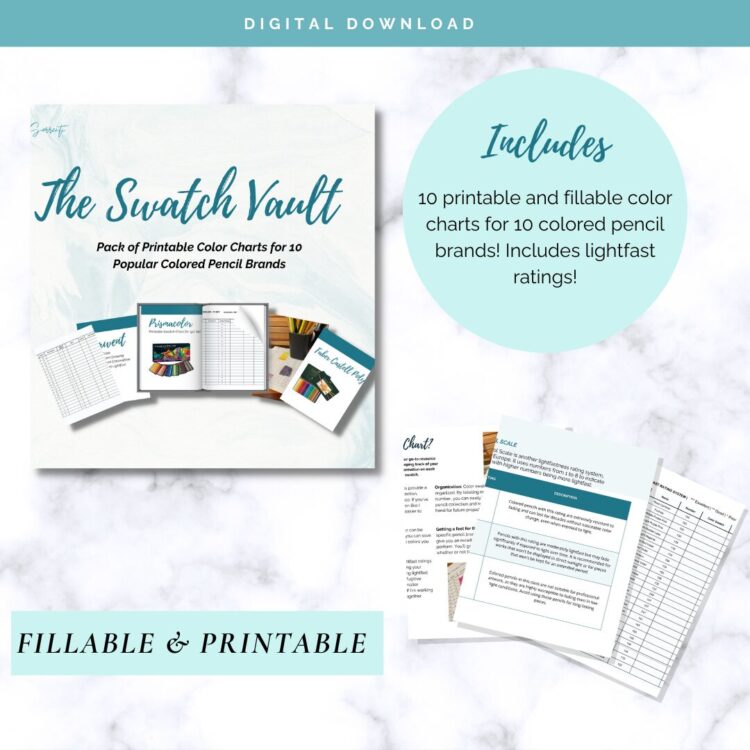I have to admit, Derwent is one of my favorite art brands. I’m a loyal fan of several of their colored pencil lines, including the Lightfast (my all time favorite) and Chromaflow lines. I decided to check out their watercolor pencils. I don’t have a whole lot of experience with watercolor, but have recently been experimenting with getting into the medium. I created a mixed media piece a while back with a base of watercolor pencils (Faber Castell Albrecht Durer) and regular colored pencils on top.
I loved the result
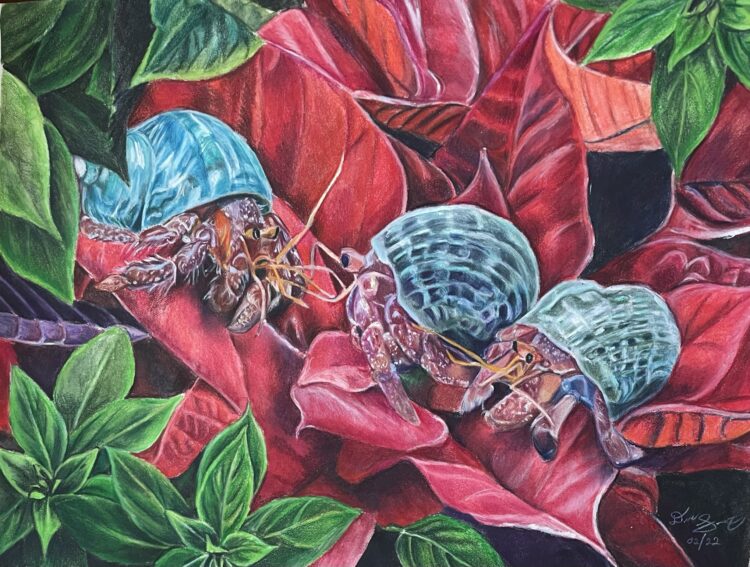
For this review, I’ve printed out a coloring page and am working on Stonehenge paper. (I actually realized that Stonehenge is actually not a watercolor paper; their Aqua line is watercolor paper), but I did enjoy using the regular Stonehenge for this project.
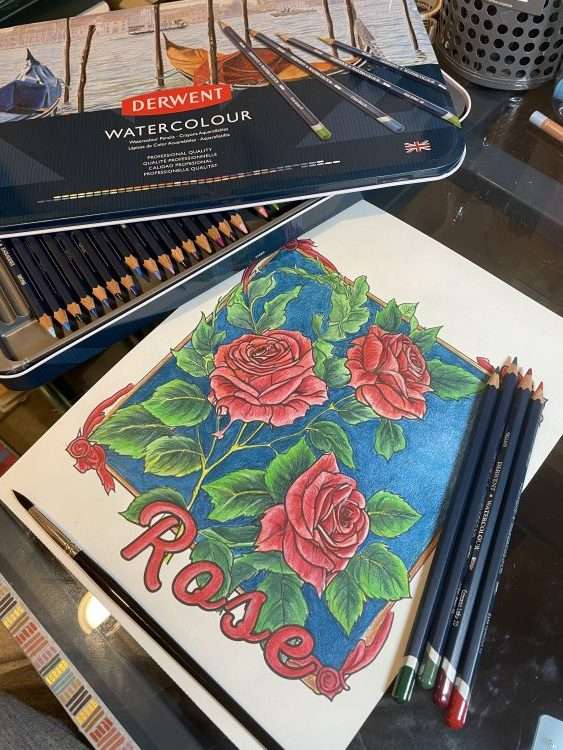
Product Features
- Available in sets of 12, 24, 36, and 72
- Amazing blending capabilities and color saturation
- Core is quite soft, and easily breakable
- Sharpens to a fine point but the point dulls down quickly
- Smooth laydown
- 3.5 mm core, so fits into most sharpeners
The pencils come well packaged in a metal tin with shrink wrap protecting the pencil trays, so they don’t get damaged in shipping.
As for the pencils themselves, the barrel is dark, with the color name written in silver, so it’s easily readable. Before using these pencils for the first time, I did swatch them because we all know that it’s hard to know ahead of time what the colors will look like when wet.

Lightfastness
For professional work that I’m planning to sell, I won’t use anything below a 4 on the blue wool scale. If I’m working in a sketchbook or a coloring page, I don’t worry about it.
- 15 pencils are below a 4
- 19 pencils are listed from 4 through 5
- The rest are from 6 through 8 which is generally considered excellent lightfastness
Sharpening and Breakage
To read more about the supplies I generally use for colored pencil work, including my preferred sharpener, read this post over here.
The Ultimate Guide to the Best Colored Pencil Supplies
Performance
First thoughts
Anyway, these laid down BEAUTIFULLY. They weren’t scratchy, and they felt so smooth as I was working with them. I made sure to use light layers because if you push too hard with watercolor pencils, they don’t blend out as well. I did about 3 layers before blending out.
Blending
The blending ability of these pencils is my favorite part about working with them. They are an absolute DREAM to work with. As many of you know, regular colored pencil takes a while to get a good blend, but these blend out SO smoothly and so saturated after just 3 layers.
I did make sure I wasn’t scribbling when applying the initial layers, and made sure I was getting an even laydown. For this specific project, I did some layering, blended out, added more layers, and then blended out a second time. I didn’t use any water after the second time through, and just used the pencils themselves to add detail.
Final Result

I did add some colored pencil over the background because the set didn’t have a dark enough teal color, so I couldn’t resist grabbing my Derwent Lightfast Pacific Blue to darken up the background.
Final Thoughts
Pros
- They come in open stock
- Pricing is quite affordable compared to some other watercolor pencils
- Beautiful color saturation and laydown
- Blending is phenomenal
- Their white pencil is BEYOND AMAZING
Cons
- they break easily
- they don’t hold their point very well
- Not all lightfast, but that’s a common feature of the watercolor medium as a whole
More Resources
Share on Social Media!
